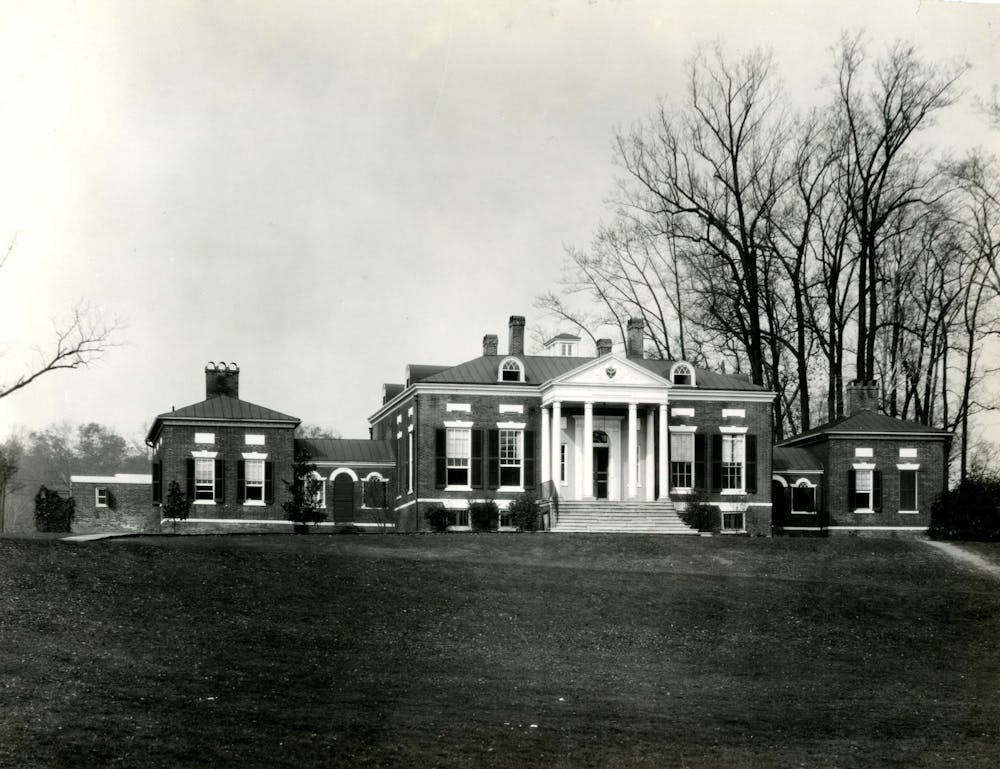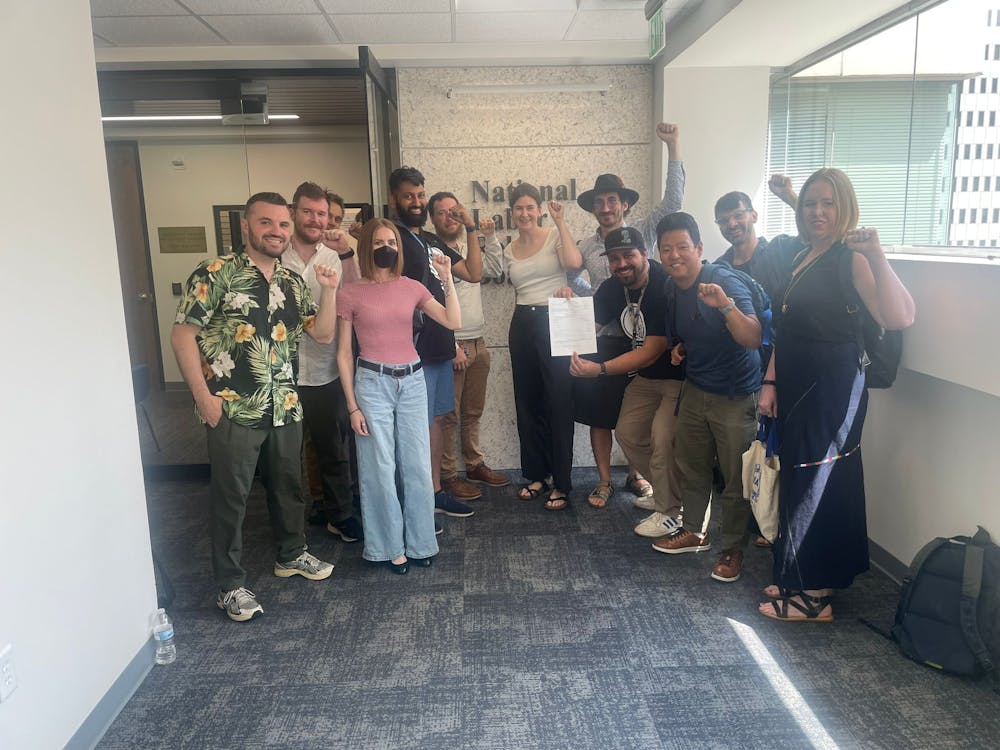Between Milton S. Eisenhower Library and the Alumni Memorial Residence Halls, there is a large, two-story brick house that has stood there even before Hopkins existed: the Homewood Museum. The building had numerous lives before its current position as a museum.
According to A Brief History of the Homewood Campus: Its Buildings, Monuments and Sculpture, the property of Homewood, known as Homewood Farm, was given to Charles Carroll Jr. in 1800 as a wedding gift from his father, Charles Carroll of Carrollton, signatory of the Declaration of Independence. The construction of the house began in 1801 and continued until 1806, totaling a sum of $40,000. Before the tall modern buildings of downtown Baltimore, one could see the harbor from the front steps of the house.
Carroll Jr. lived in the newly built house, then called the Homewood House, until he died in 1825, after which it was inherited by Charles Carroll III. He occupied the building until 1833. In 1839, Carroll sold the property to Samuel Wyman, a successful merchant, who lived in the house until 1853.
In an interview with The News-Letter, Lori Finkelstein, the director of Johns Hopkins University Museums, noted that the property was not a plantation, although crops were grown by the enslaved people.
“[The crops] weren't grown to be sold as commodities, but they were grown for sustenance,” she said. “The estate would not have just been this house; it [included] the Privy, which was the outhouse, the Merrick Barn, which was the barn for this house, and several other buildings.”
Homewood House was repurposed in 1897 as Country Day School (later known as Gilman School). This all-boys school stayed until 1910, although the property was given to the University in 1902. After the full relocation of the University to Homewood in 1916, the house was used as space for The Johns Hopkins Club.
In 1929, Mr. and Mrs. Francis P. Garvan donated funds to the University to renovate the house into an antique furniture collection museum. Finkelstein shared that there were efforts to have museum installations in the building because there was public recognition of the significance of Homewood House.
“It's one of the country's best examples of Palladian architecture and of Federal architecture,” she explained. “The hallmarks of that are its symmetry and the columns and porch in the front of the house. There's an awareness, even while the University is here, that this building is historically significant.”
Finkelstein added that the size and layout of the house are also architecturally significant. The house is divided into distinct areas designated for particular services, such as the kitchen area, butler’s pantry, center halls and the sleeping area.
“It's a big house by today's standards, so you can imagine by the standards of 1801, it's really quite large,” she commented. “The architectural details are quite beautiful and fantastic.”
The restoration of the house was completed in 1932. However, the building didn’t stay a museum for long. Remsen Hall, where most of the University’s administration offices were settled, ran out of space in 1936, so the Offices of the President, Provost and Secretary had to relocate to the west wing of Homewood House. Soon after, the museum closed completely to provide office space due to overcrowding during World War II.
Nevertheless, the historical significance of the building was still widely acknowledged. As such, it was added to the National Register of Historic Places in 1971. After the University found alternative administrative space in 1982, a project to restore the Homewood House as a museum began. University trustee and alumnus Robert G. Merrick, who had been interested in the building since the 1920s when he was a graduate student, donated funds in 1973 for this restoration initiative. The building was newly born in September 1987 as the Homewood Museum.
Despite its long history of serving numerous purposes, the structure of the building has remained fairly unchanged since its initial construction two centuries ago.
“One of the things that's very significant about this building is that it never had any additions to it and was never altered in any major way,” Finkelstein commented. “That is pretty phenomenal for a building of this age.”
Finkelstein did recognize that a lot of work has been done to restore the building to its form of the 1800s. This includes removing fluorescent lights attached to the ceiling, rebuilding the steps and changing the roof. However, she highlighted that the outside had very little change except fixing the painting.
It is important to note, however, that none of the furniture inside currently is original to the house. According to Finkelstein, the restoration project in the 1980s included research of the inventories of the Carroll family. Furniture that most closely matched the existing inventory records was placed inside.
As the earliest photographs of the house are from the 1890s of the Country Day School, there is ongoing research about the house’s original design. Finkelstein added that, this summer, the she plans to research the history of the building between 1853-97, which is currently unknown.
According to Finkelstein, the museum, in its earliest years, focused on Charles Carroll Jr., his wife and their children. Soon after, it transitioned to showcase the decorative arts and architecture of the house. In 2012, research was undertaken to better understand the lives of the people who were enslaved in Homewood House in the 1800s.
“We believe that upwards of 25 people were enslaved to this house. The tour that people go on now reflects their experiences in the house,” she described. “We try to tell a much fuller story focusing on all the families who lived here: the free white families and the enslaved black families.”
In addition to the permanent exhibition on the enslaved people who worked in the house, there is a temporary exhibit on the history of three historically black neighborhoods near the Homewood campus to commemorate Black History Month. Finkelstein stressed the importance of highlighting these communities formed by formerly enslaved black people or the children of enslaved black people.
“We wanted to explain that this piece of land doesn't exist in isolation. It's part of a network of neighborhoods in Baltimore that have rich histories,” she said. “It's very significant that, in the early 1800s, these free men were able to acquire the means to purchase land and create settlements for their families, and there are descendants of the families who still live in all of these areas.”





